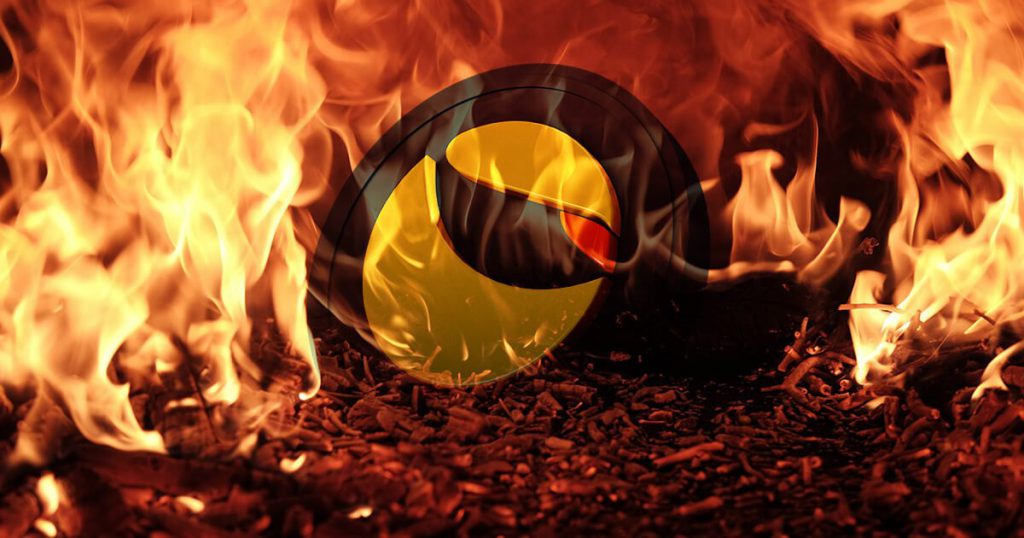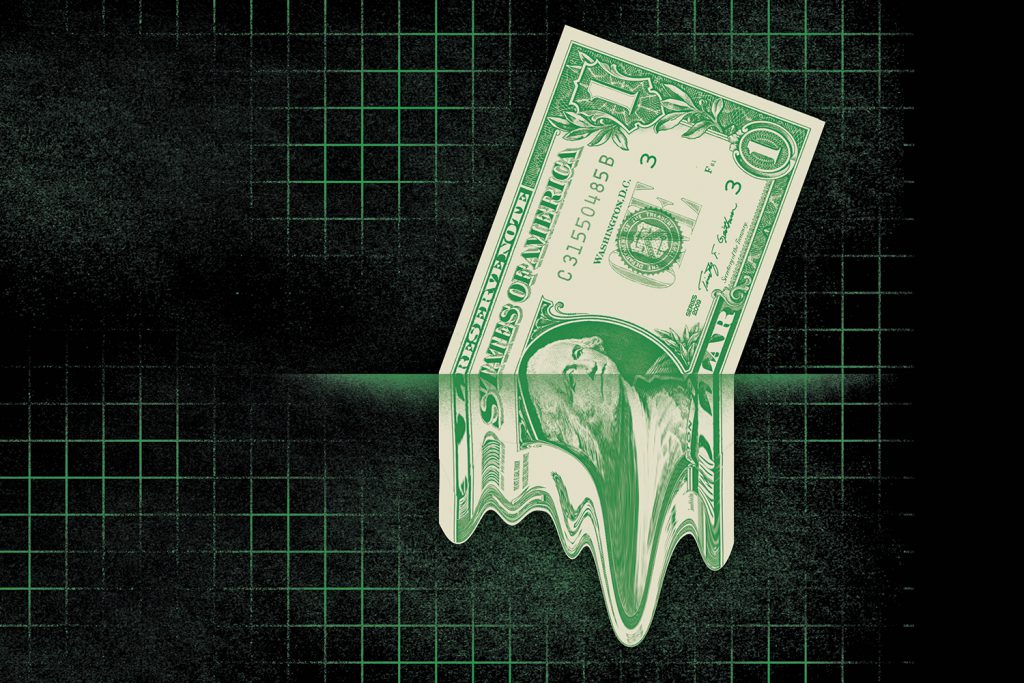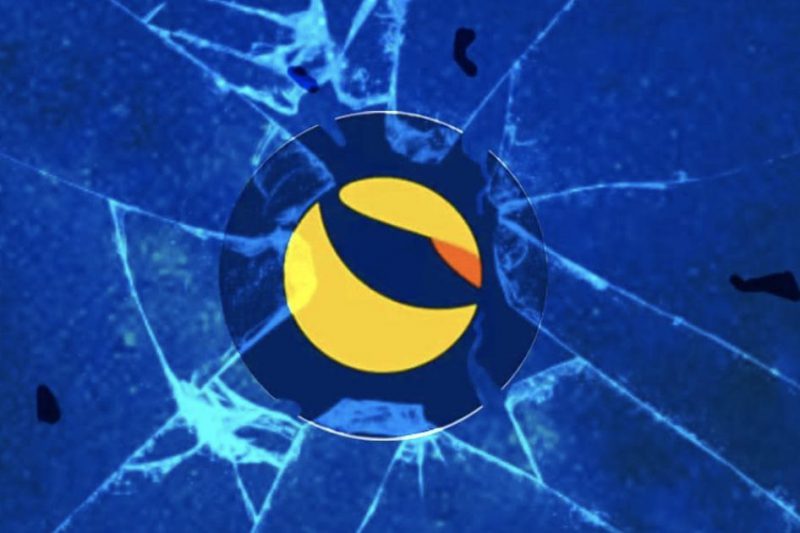Why Did Luna Crash? Understanding the Algorithmic Stablecoin Crash
The cryptocurrency market is known for its volatility, but perhaps one of the most dramatic crashes in recent history was the collapse of the Luna crypto network.
In April 2022, billions of dollars were wiped out as the price of Luna tokens plummeted, leaving investors devastated.
This crash closely linked to the algorithmic stablecoin, UST, significantly influenced the Terra ecosystem.
In this article, we will delve into the rise and fall of Luna, exploring the intricacies of the Terra blockchain, the concept of algorithmic stablecoins, and the events that led to the catastrophic crash.
Also read: U.S. Lags Behind India, Vietnam in Crypto Adoption


What are Luna Crypto and the Terra Ecosystem?
To understand the Luna crash, we must first grasp the concept of the Terra ecosystem and its native cryptocurrency, Luna.
Founded in 2018 by Do Kwon and Daniel Shin, Terraform Labs created the Terra blockchain. This blockchain aims to provide a decentralized payment system using stablecoins pegged to various fiat currencies.
Luna, the native token of the Terra network, played a crucial role in maintaining the stability of Terra’s stablecoins.
One of the key stablecoins in the Terra ecosystem was UST, an algorithmic stablecoin.
Unlike traditional stablecoins such as Tether or USD Coin, backed by actual reserves, UST’s value was derived from its sister token, Luna.
The supply of UST was regulated by a mechanism that allowed users to burn Luna tokens in exchange for UST and vice versa, ensuring a stable peg to the US dollar.
Also read: Best USDT Exchanges
The Popularity and Growth of Luna and UST
In the early years, Luna and the Terra ecosystem remained relatively under the radar, with a market cap below $500 million.
However, in 2021, Luna experienced a surge in popularity and value.
By March, its market cap had reached $8.5 billion; by April 2022, it peaked at an astonishing $41 billion. The primary driver of this growth was the Anchor Protocol, a money market platform built on the Terra blockchain.
Anchor Protocol offered high yields on UST deposits, with some users earning annual percentage yields (APYs) of around 20%.
This attracted many investors who sought a safe haven for their funds in the volatile crypto market. The popularity of the Anchor Protocol led to a surge in demand for UST, resulting in its rapid increase in circulation.
The Mechanism Behind UST and Luna
Let’s dive deeper into its mechanisms to understand how UST operates within the Terra ecosystem.
The algorithmic design of UST allowed users to burn Luna tokens to mint UST when the price of UST was above $1. Conversely, when the price of UST fell below $1, users could burn UST to mint Luna tokens.
This mechanism aimed to maintain the stability of UST by incentivizing users to arbitrage between UST and Luna. However, as demand for UST grew exponentially due to the popularity of the Anchor Protocol, the mechanism faced significant challenges in sustaining the peg.


The Unraveling: UST Depegging and the Luna Crash
In May 2022, the stability of UST began to crumble. The price of UST slipped below its $1 peg, causing panic among investors.
The Luna Foundation Guard, an organization responsible for supporting the Terra ecosystem, attempted to defend the peg by deploying the UST Reserve, which held various assets, including Bitcoin.
However, their efforts failed, and the market damaged its confidence in UST.
As investors rushed to exit UST, they utilized the Terra protocol’s arbitrage mechanism to burn UST and mint Luna tokens.
Furthermore, this flood of new Luna tokens entering the market and the lack of demand for buying Luna resulted in a hyperinflation of Luna’s supply. The circulating supply of Luna skyrocketed, causing its price to plummet.
The crash was swift and severe. Luna, which had reached a high of $116 in April, dropped to a fraction of a penny by June. Substantial losses left investors with billions of dollars wiped out.
The Luna crash had a ripple effect throughout the entire cryptocurrency market, causing losses estimated at $300 billion.
The Aftermath: Bankruptcies and Legal Troubles
The collapse of the Luna crypto network had far-reaching consequences. Severe impacts hit numerous crypto companies and investment firms, some even filing for bankruptcy.
One notable example is Three Arrows Capital, a major crypto hedge fund heavily invested in the Terra ecosystem.
Meanwhile, Do Kwon, the co-founder of Terraform Labs and a prominent figure in the Luna crypto network, faced legal troubles.
In September 2022, South Korean authorities issued an arrest warrant for Kwon, accusing him and five others of violating local market laws. Investors who suffered losses in Luna also filed complaints, alleging fraud and illegal fundraising.
Why Did Luna Crash?: Lessons Learned and Moving Forward


The Luna crash serves as a cautionary tale for the cryptocurrency market.
It highlights the risks associated with algorithmic stablecoins and the potential consequences of relying on complex mechanisms to maintain price stability.
Furthermore, the collapse also exposed the need for robust risk management practices within the industry.
For investors interested in the cryptocurrency market, it is crucial to approach investments with caution. Diversification and risk management strategies are essential to mitigating potential losses.
Additionally, thorough research and due diligence are vital when considering investments in algorithmic stablecoins or other highly volatile assets.
As the crypto market evolves, regulatory measures and oversight may play a more significant role in preventing similar crashes.
The lessons learned from the Luna crash will undoubtedly shape the future of the cryptocurrency industry, prompting greater scrutiny and a focus on stability and transparency.
Conclusion: Why Did Luna Crash?
In conclusion, the Luna crash in 2022 was a catastrophic event that shook the cryptocurrency market. The Terra ecosystem’s collapse and the UST’s de-pegging had far-reaching consequences, wiping out billions of dollars and leaving investors reeling.
The crash highlighted the risks associated with algorithmic stablecoins and the need for robust risk management practices in the crypto industry.
While the Luna crash has undoubtedly caused significant damage, it also serves as a valuable lesson for the cryptocurrency market’s future.
Additionally, by learning from the mistakes and shortcomings of the past, the industry can strive to create a more stable and secure environment for investors.
As the market evolves, investors must stay informed, exercise caution, and approach investments with a long-term perspective.
By doing so, they can navigate the volatile nature of the crypto market and make more informed decisions.
Disclaimer: The information in this article is for informational purposes only and should not be taken as financial advice. Always conduct research and consult a professional advisor before making investment decisions.





